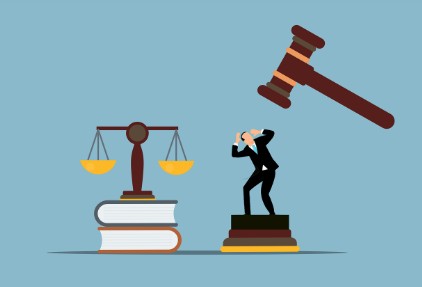Roofing is a high-stakes business. Between heavy materials, unpredictable weather, and the unique challenges of each job site, there are a lot of moving parts—literally and figuratively. As roofing contractors, we do everything in our power to deliver a quality installation or repair. But let’s be honest: some things are simply beyond our control.
That’s where legal disclaimers come in.
Protecting Both Contractor and Client
Legal disclaimers aren’t just a formality—they’re a crucial layer of protection for both roofing contractors and property owners. These disclaimers help set clear expectations, outlining the potential risks involved in various roofing processes and ensuring that both parties understand their responsibilities.
For example, consider the removal of gravel from a roof before an overlay. A disclaimer like this helps manage expectations:
“During the gravel removal process, [Roofing Contractor Name] will take precautions to minimize debris entering roof drains, pipes, and other penetrations. However, due to the nature of gravel removal, some small debris may enter these areas despite our best efforts.
By proceeding with gravel removal services, the property owner acknowledges and accepts this risk. [Roofing Contractor Name] is not responsible for any blockages, clogs, or damage to plumbing, drainage systems, or mechanical equipment caused by gravel or debris entering roof penetrations. It is the property owner’s responsibility to inspect and clear any affected systems after gravel removal is completed.”
This disclaimer does two important things: it assures the client that the contractor will take precautions, but it also acknowledges the reality that some debris may still find its way into unintended areas. By outlining this risk up front, the contractor reduces the chance of disputes down the road.
Addressing Uncontrollable Factors
Even with the best workmanship, certain elements remain outside of a roofing contractor’s control. Water intrusion during pressure washing for silicone coatings is a prime example. A disclaimer like the following helps establish clear boundaries:
“Pressure washing is a necessary step in the preparation process for silicone roof coatings. During this process, water intrusion may occur, especially in areas with pre-existing leaks, weak seals, or other vulnerabilities. [Roofing Contractor Name] takes precautions to minimize water entry; however, we cannot guarantee that all water will be prevented from entering the building.
By proceeding with pressure washing services, the property owner acknowledges and accepts the risk of potential water intrusion. [Roofing Contractor Name] is not responsible for any interior damage, including but not limited to ceiling stains, drywall damage, or electrical issues, that may result from water entering through existing leaks or defects in the roof or building envelope. It is the property owner’s responsibility to address and repair any pre-existing conditions that may contribute to water intrusion.”
Another common concern is interior drywall damage. When new roofing materials are installed, the additional weight, combined with natural building settling, can sometimes lead to minor cracks or shifts in drywall. A disclaimer for this scenario ensures clarity:
[Roofing Contractor Name] is not responsible for any interior damage, including but not limited to drywall cracks, nail pops, or shifting in ceilings and walls. Many factors can contribute to these issues, such as normal building settling, pre-existing structural conditions, improper drywall installation, or the temporary weight of roofing materials during installation. While we take every precaution to minimize impact, these occurrences are beyond our control and are considered a normal part of construction and home maintenance. By proceeding with roofing services, the property owner acknowledges and accepts this risk.
Setting the Right Expectations
Roofing contractors aren’t in the business of cutting corners or leaving clients with unexpected damages. Disclaimers don’t absolve contractors of responsibility for poor workmanship, but they do clarify what is and isn’t within their control. In doing so, they help establish trust and transparency, which ultimately benefits both the contractor and the client.
So, the next time you see a legal disclaimer in a roofing contract, don’t think of it as just fine print—think of it as a roadmap for a smoother, more professional working relationship. Because when expectations are clear, everybody wins.

